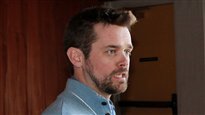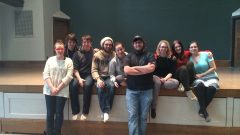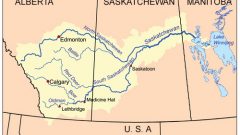To an outsider, scientists communicating with other scientists often seem like they’re speaking in an incomprehensible language.

Scientists for their part are often frustrated in trying to get their research information understood by the general public.
A researcher at the University of Saskatchewan, in collaboration with the drama department has come up with the idea of creating a play to initiate discussion and make the research more accessible to the public
Graham Strickert (PhD) is a research associate at the University of Saskatchewan in the Global Institute for Water Security..
The Saskatchewan river basin at 335,000 sq.km, comprises an area far greater than all of Great Britain.
It stretches across three provinces from the Rocky mountains in Alberta, to Lake Winnipeg in Manitoba.
Millions of people depend on water for residential, agricultural, commercial and recreational purposes.
In presenting his research and information about water security and usage to a variety of different stakeholders, he felt that some of the information, and various stakeholder positions were not being fully understood by others in the multi-stakeholder workshops due to the scientific language barrier and generally passive presentations.
His wife, also a scientific researcher, suggested presenting the information in a stage play which is a format more accessible to non-scientists.

U Sask drama students, cast of “Downstream”
L-R Jillian Borrowman, Chris Donlevy (Assistant Director), Phil Munson, Jesse Fulcher Gagnon, Jenna Berenbaum, Kashtin Moen, Kelly McTaggart, Lauren Younghusband, Andrea Folster (photo: Lori Bradford)
In discussing the idea further and with the university drama department they developed “Downstream” a play in “forum theatre” format which involves the audience in discussion about what’s happening on stage. It’s a format that invites audience members to make decisions as the story progresses. For example, should authorities breach a levee and flood land to save a community downstream? Who bears the effects of decisions made upstream.
What are the implications of land use change, droughts, floods, climate change and so on for the often conflicting interests of the various stakeholders.
The idea of using an artform, in this case a theatrical presentation, is relatively new for scientists and Strickert says reaction from the scientific community has been mixed.
However, he says if the play proves successful in engaging people and helping them to better understand the information and the positions of other stakeholders involved, then he can see the use of this method expanding.
Downstream gets its debut next week and will be performed fo audiences in a few of the cities in the Saskatchewan River Basin. It was also made possible through a “Connections” grant program of the Social Sciences and Humanities Research Council of Canada (SSHRC).








For reasons beyond our control, and for an undetermined period of time, our comment section is now closed. However, our social networks remain open to your contributions.